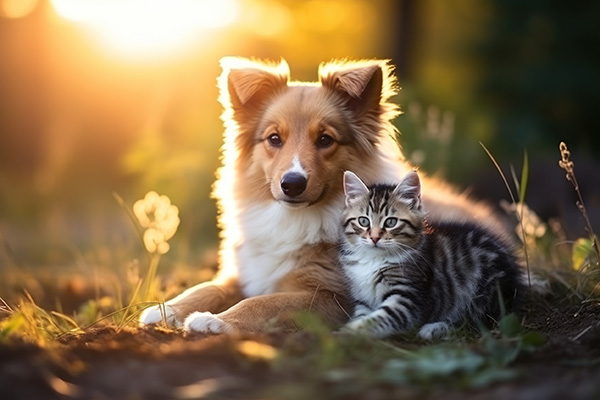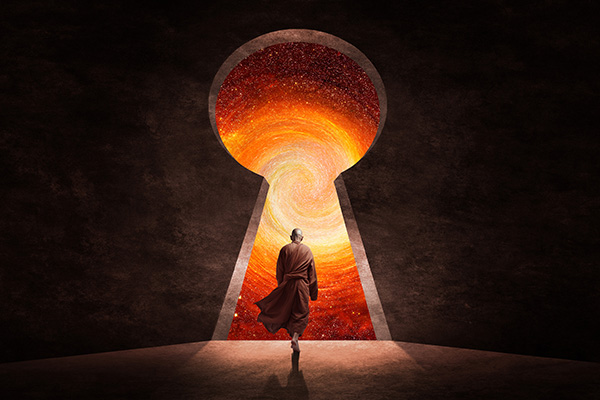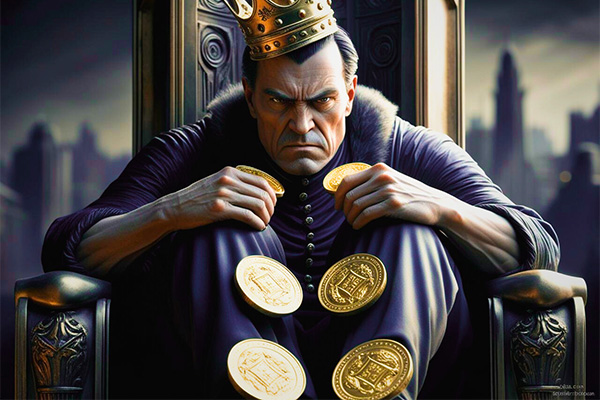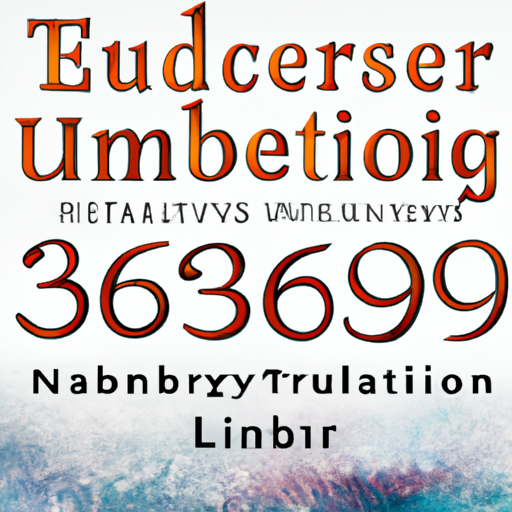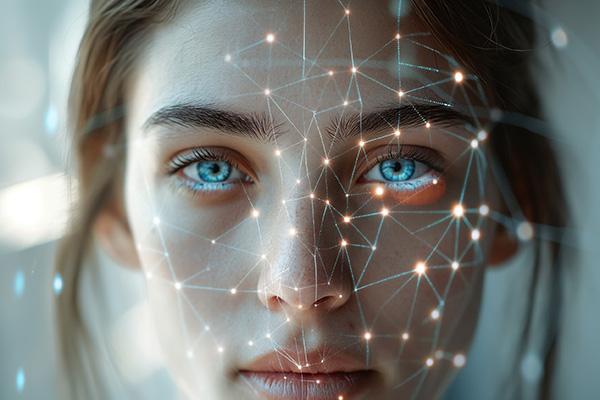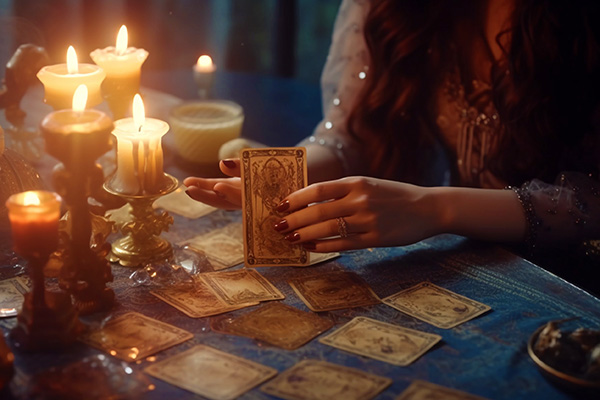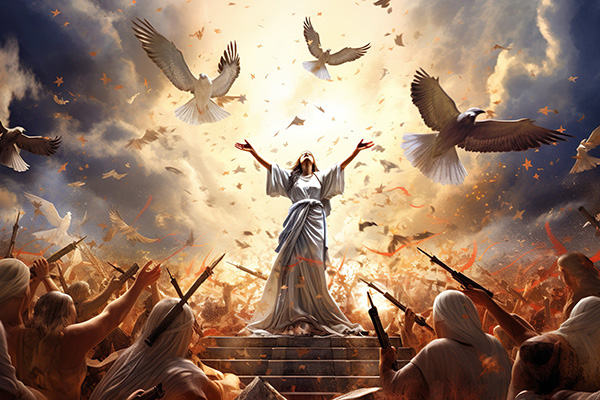Discovering the Magic of Nature Spirits and Elementals
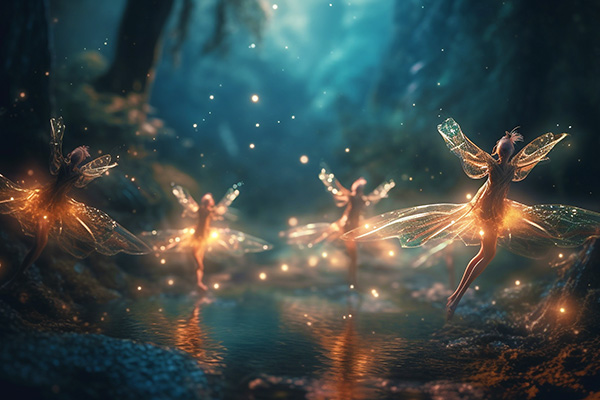 During my childhood in the UK, I cherished my visits to a neighbor, Mrs. O’Leary, whose melodic Irish voice still resonates in my memory. She frequently talked about the “Good People” and recognized their presence in her home and garden. I remember her taking us outside to make small offerings to these unseen mystical entities.
During my childhood in the UK, I cherished my visits to a neighbor, Mrs. O’Leary, whose melodic Irish voice still resonates in my memory. She frequently talked about the “Good People” and recognized their presence in her home and garden. I remember her taking us outside to make small offerings to these unseen mystical entities.
Although this seems like a distant memory now, I can still recall glimpsing them, too. Perhaps they revealed themselves to us because we genuinely believed, or maybe it was Mrs. O’Leary’s encouragement that drew them out.
No matter the cause, those instances left a profound impact. To me, it felt like being “in my element,” completely attuned to the concealed, magical energies of nature.
I vaguely remember a wondrous moment in Mrs. O’Leary’s garden when she drew my attention to a delicate, transparent figure sitting on a large moss-covered rock at the base of her treasured old hawthorn tree. With joy, she described how this “little person” was waving at us and urged me to respond. Standing there in awe and fascination, I became conscious of what appeared to be countless luminous sprites frolicking in the shimmering water below.
Despite the skepticism prevalent in a technology-driven world, progressively lacking the myriad miracles and wonders of nature and the unseen spheres, Mrs. O’Leary and the nature spirits still remind me of the healing and transforming energy found in respect, tranquility, and everyday magic.
Rich in supernatural beings, Irish mythology features many entities intricately linked to specific components of the natural world. These figures transcend mere fairy tale characters; they are embedded in the essence of the land and its people.
In all that is visible, there exists an invisible fertility, a muted glow, a gentle anonymity… It emerges in silent tenderness and flows toward me from the unseen roots of all created existence ~ Thomas Merton
The ancient Celts, including those in Ireland, were animists, believing that all aspects of nature—from rivers and trees to mountains and weather—held spirit and awareness. This belief system intertwined the divine with the natural world, perceiving the earth itself as a living being.
This belief explains why certain natural formations like sacred groves, springs, and wells were deemed portals to other realms, revered as hallowed places. In Irish folklore, the landscape is not merely a backdrop; it actively engages in the narratives. Locations like the Giant’s Causeway, the Cliffs of Moher, along with various lakes and hills, possess their own legends and associated mythical beings.
For centuries, these tales were passed through oral traditions from one generation to the next. While conducting a psychic reading for a client with a rich Irish accent yesterday, I found myself contemplating whether children growing up in Ireland today still hear tales of these magical entities.
I also ponder if the concepts of “thin places,” where the divide between the physical and spiritual realms is particularly tenuous, and the reverence for fairy mounds or forts, remain alive in the collective cultural mindset. Eager to learn more about these traditions, I uncovered a captivating world of forgotten wisdom.
Nature Spirits, Or Elementals?
A nature spirit is a supernatural or metaphysical entity that is believed to inhabit, embody, or protect various aspects of the natural world, including trees, rivers, rocks, mountains, or animals. Across different cultures, nature spirits are linked to the life force or consciousness present in nature, often regarded as guardians, messengers, or intermediaries connecting humanity to the natural realm. They appear in numerous world traditions (e.g., dryads in Greek mythology, kami in Shinto, or landvættir in Norse tales).
An elemental is a specific type of nature spirit that represents one of nature’s classical elements: earth, air, fire, or water. The term originates from Renaissance occult philosophy (notably Paracelsus, 16th century), which described elementals as distinct categories of beings: gnomes (earth), sylphs (air), salamanders (fire), and undines (water). Unlike the broader term “nature spirit,” which encompasses diverse cultural figures, “elemental” pertains specifically to these archetypal guardians or personifications of the classical elements.
Interestingly, the Greek goddess Psyche, whose name contributed to the modern term “psychic,” was reinterpreted during this Renaissance era in a manner that subtly merged the distinction between divine archetypes and elemental beings. Often portrayed with delicate butterfly wings in artworks of the time, Psyche visually resembled the sylphs and airy spirits described in Paracelsus’s elemental classification.
Her newly acquired wings, symbolizing the soul’s ability to evolve and transcend, helped establish her as a liminal figure, one who maneuvered gracefully between realms. Although not originally a nature spirit or elemental in traditional Greek mythology, her Renaissance depiction infused her identity with the ethereal qualities of air and spirit. Thus, Psyche became a kind of spiritual connection: not purely an elemental, yet representative of the same sacred transformative energies that Paracelsus and his followers sought to comprehend within both nature and the human essence.
Depart, O, human child! To the wild woods and waters, Hand in hand with a fairy, For the world is more filled with sorrow than you can fathom ~ W.B. Yeats
Below is an inclusive listing of elementals and spiritual entities associated with the fundamental elements of Earth, Water, Air, Fire, and others, stemming from various mystical, magical, and folkloric traditions:
EARTH ELEMENTALS
Gnomes (Western esoteric, alchemical, Theosophical traditions): Small, subterranean guardians of minerals and hidden treasures.
Dwarves (Norse, Teutonic folklore): Skilled artisans of stone and metal, protectors of underground riches.
Elves (Norse and Germanic myth, modern fantasy): Elegant, nature-bound beings associated with forests and fertility.
Tree Devas / Dryads (Hindu and Greek mythology): Spiritual guardians of specific trees or groves.
Nüwa’s Stone Spirits (Chinese mythology): Earth-born entities created by the goddess to stabilize existence.
Jovita and Sabian Spirits (some esoteric traditions): Kind spirits tending to soil, roots, and growth.
WATER ELEMENTALS
Undines (Paracelsian and alchemical tradition): Feminine spirit beings of lakes, rivers, and oceans, often represented as graceful maidens.
Naiads (Greek mythology): Freshwater nymphs inhabiting springs, streams, and fountains.
Sea Nymphs & Oceanids (Greek mythology): Daughters of ocean deities, guardians of seas and coastlines.
Water Sprites, Nixes, & Nixies (Germanic and Scandinavian folklore): Mischievous or serene water spirits, often resembling humans.
Rusalki (Slavic folklore): Frequently water spirits associated with rivers or lakes, sometimes benevolent, sometimes capricious.
Yokai Water Spirits (Japanese folklore): Various mysterious water-bound entities like kappa or funayurei.
AIR ELEMENTALS
Sylphs (Paracelsian and alchemical tradition): Invisible air spirits, delicate and ethereal, sometimes depicted as breezy dances.
Zephyrs (Greek myth): Gentle west winds personified as benevolent, softly spoken spirits.
Aerial Devas / Vayu Devas (Hinduism): Divine beings associated with wind, breath, and life-force.
Air Djinn (Islamic folk tradition): Supernatural beings made of smokeless fire, free to choose between good or ill.
Anemoi (Greek mythology): Wind deities representing each direction, such as Boreas, Notus, Eurus, and Zephyrus, sometimes envisioned as air beings.
FIRE ELEMENTALS
Salamanders (Paracelsian and alchemical tradition): Elementals of flame, resilient and radiant, often wise and enduring.
Flamesprites & Fire Spirits (various magical traditions): Embodiments of elemental fire, ranging from hearth-keepers to wild blazing entities.
Fire Djinn / Ifrit (Islamic folklore): Powerful beings born of fire, often formidable or prideful, yet occasionally allies.
Agni’s Flamespirit (Hinduism): Personification of sacred fire, guardian of rituals and cosmic balance.
Phoenix Spirits (Egyptian, Greek, and Chinese myth): While mythological birds rather than pure elementals, their connection with transformative fire endows them with elemental significance.
MIXED ELEMENTALS & NATURE SPIRITS
Fairies, Fae, and the Little Folk (Celtic and European folklore): Varied factions including sprites, pixies, and brownies, inhabiting fields, homes, and ancient sites.
Brownies, Hobs & Domovoi (Scottish and Slavic folk): Household spirits tied to the earth, domestic hearth, and benign protection.
Trito & Mer-people (Greek and global sea-folk traditions): Occasionally conflated with water elementals due to their marine nature.
Djinn / Genies (Islamic and Middle Eastern traditions): Broadly associated with the four elements and sometimes categorized by their elemental alignment.
Elemental Hybrids (Alchemy and esoteric teachings): Beings formed from combined elements, such as Earth and Water hybrids like marsh sprites.
Spirit Animals & Totems (Shamanic traditions globally): While not classical elementals, some animals are regarded as elemental protectors, such as thunderbirds or water serpents.
A lady, who rode with me through the woods, remarked that the woods always seemed to wait, as if the spirits dwelling in them paused their actions until the traveler had passed… ~ Ralph Waldo Emerson
A Lingering Belief In The ‘Good People’
The Good People of Irish folklore exist in a captivating space that intertwines nature spirits and elementals; however, they are not typically classified as elementals in strict esoteric terms. Depending on the area, these supernatural entities are traditionally referred to in Ireland as:
The Good People (Daoine Maithe): This is the most prevalent respectful euphemism, intended to avoid upsetting the beings by naming them directly. The notion is that by referring to them as “good,” they would remain favorable. Many rural Irish individuals frequently used this term in their everyday conversations in earlier times.
The Little People / The Little Folk (Daoine Beaga): These phrases also surface in folklore, particularly in English retellings. They highlight size and miniature imagery, appealing to children’s imaginations. Nonetheless, in traditional belief, fairies are not always perceived as tiny; at times they appear human-sized or larger.
The Fair Folk (Daoine Sí, literally meaning the “people of the mounds”): This is the older Gaelic root term from which “fairies” is derived. It refers to their connection with ancient burial mounds and fairy hills.
Some of the mystical beings from Ireland include:
The Aos Sí (Fairies): The “people of the mounds,” regarded as otherworldly beings or spirits residing in fairy hills (sí). They are often linked to the unseen forces of nature and can be either kind or playful.
The Púca: A shape-shifting entity associated with wild, untamed aspects of nature, often manifesting in animal forms like a horse or goat.
The Banshee: While commonly perceived as an omen of death, her name bean sí translates to “fairy woman,” linking her closely to the supernatural realm.
The Merrow: A mermaid-like being with the ability to live both on land and in water, representing the connection between these two realms.
The Cailleach: An ancient hag figure symbolizing winter and storms, embodying the powerful and sometimes harsh forces of nature.
Altering or demolishing a fairy fort or Celtic ringfort can lead to trouble, creating tumult. Never disturb a fairy bush. It belongs where it exists and nowhere else ~ Eddie Lenihan
I was thrilled to learn that in contemporary Ireland, the belief in the “Good People” persists, and many associated traditions still hold a significant place in daily life. Although Ireland is a progressive and technologically advanced society, the ancient veneration for these mystical beings has not entirely faded. In fact, many rituals endure quietly, especially in rural areas and beyond.
For instance, “fairy trees,” particularly solitary hawthorn trees, continue to be regarded with considerable caution and respect. These trees are deemed sacred, and locals often refrain from cutting them down, as they believe doing so could invite bad luck or even supernatural repercussions. Roads or construction projects may be redirected instead of disturbing one! A well-known case from 1999 involved a motorway being rerouted to safeguard the Latoon fairy bush after concerns rose about possible fairy retaliation.
Likewise, ancient ringforts, long considered as abodes of the Good People or gateways to the Otherworld, are frequently respected and left undisturbed. Numerous landowners opt not to build nearby, not necessarily from a literal belief, but due to a deeply ingrained cultural reverence. Even self-identified skeptics often honor these customs, just in case.
In some regions, quiet offerings persist. A bowl of milk left beside a mound or a handful of wildflowers placed at the base of a sacred tree act as humble tokens of respect.
Through folklore celebrations, storytelling, and local customs, the legacy of the little folk remains alive. While it may be less visible than in past generations, the respect and the enigma endure.
Fairy tales hold more truth than reality: not because they tell us dragons are real, but because they affirm that dragons can be conquered ~ G. K. Chesterton
Inviting Elemental Presence Into Your Life
If you, cherished reader, feel moved to explore the elemental realms yourself, you might start by:
Gaining knowledge of local elemental lore, as your area likely possesses its unique versions of the “little folk.”
Mindfully sitting outdoors, inhaling deeply, observing the dance of light and air.
Extending a quiet greeting, a gentle acknowledgment to Earth, Water, Air, Fire, or the spirits surrounding you.
Inviting subtle attention by offering small gifts like wildflowers, a bowl of water, or a candle flame.
Documenting your experiences, even if they are merely fleeting feelings or visions. They may cultivate into deeper connections over time.
In sharing this broadened reflection, I hope to stir something within you. A mild yearning for profound communion. The elemental spirits may quietly dwell just beyond our perception, and exiled from our modern world of digital marvels, yet they are still present in every breeze, every root, every vibrant spark, and for a few especially fortunate children.
May magic, mystery, and a sense of wonder greet you the next time you disconnect from your digital device and step outside.
|
Shani is a certified practitioner in Reiki, aromatherapy, reflexology, body spin, and animal telepathy, having received psychic development training at the Arthur Findlay College of Psychic Research in England. As a published writer, her articles and predictions have been featured in several esteemed magazines and on psychic websites, and she has conducted readings for numerous celebrities and even heads of state in Africa. Known for her empathy, individuals find it easy to connect with her. Every month, she participates in a psychic circle, and the insights that come forth from Spirit continuously astonish everyone present. Although she was born in London, Shani has traversed the globe and studied the essence of African Mysticism, infusing her unique flavor into the experiences of those seeking her remarkable talents. From her many travels, she has realized that clients often have an innate longing to connect with the essence of their being. Get a reading with Shani at PsychicAccess.com. |
Nature spirits and elementals are mystical entities believed to inhabit our natural surroundings, instilling life and energy into the environment. These ethereal beings are thought to act as guardians of the earth, tasked with preserving the equilibrium and harmony of the natural realm.
Delving into the wonder of nature spirits and elementals can serve as a transformative and enlightening journey. By establishing a connection with these beings, we deepen our relationship with the natural world and better comprehend the interconnectedness of all living beings.
Nature spirits are frequently aligned with distinct elements like earth, air, fire, and water. These entities are said to embody the vitality and essence of their respective element and can be found in forests, mountains, rivers, and other natural settings. Elementals, conversely, are beings closely tied to natural forces such as storms, earthquakes, and volcanic eruptions.
To connect with nature spirits and elementals, approaching them with respect and reverence is essential. One effective method is through meditation and visualization, where you create a sacred space in nature and invite these beings to engage with you. By opening your heart and mind to their existence, you may receive messages, guidance, and healing from the natural environment.
Exploring the enchantment of nature spirits and elementals can also be achieved through rituals and ceremonies. By honoring these beings with offerings, prayers, and rituals, you can foster a deeper connection to the natural world and cultivate harmony and balance in your existence.
It’s crucial to recognize that nature spirits and elementals should not be controlled or manipulated—they deserve to be respected and honored as sacred beings. By approaching them with humility and gratitude, you can establish a profound and meaningful relationship with these mystical entities and develop a greater appreciation for the beauty and magic within the natural environment.
In summary, embarking on an exploration of the wonder of nature spirits and elementals can be both a profound and transformative experience. By engaging with these mystical beings, we enhance our connection to the natural world, gain insight and guidance, and nurture balance and harmony in our lives. Approaching these entities with respect and reverence allows us to forge a significant relationship with the natural world and tap into the magic and wonder surrounding us. Continue reading




